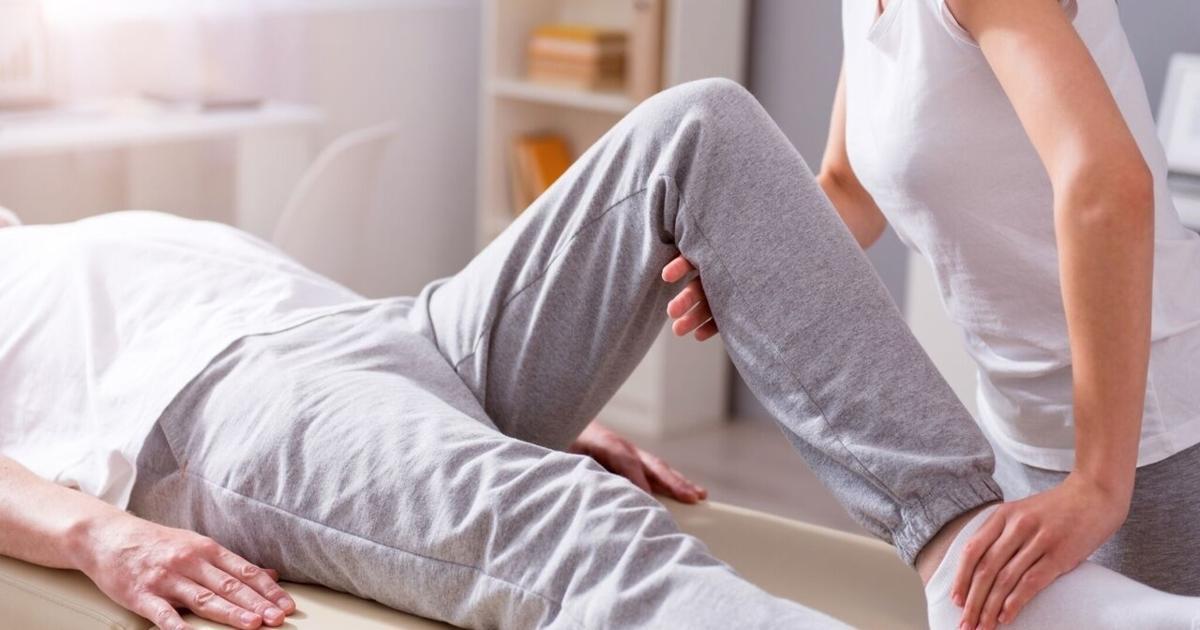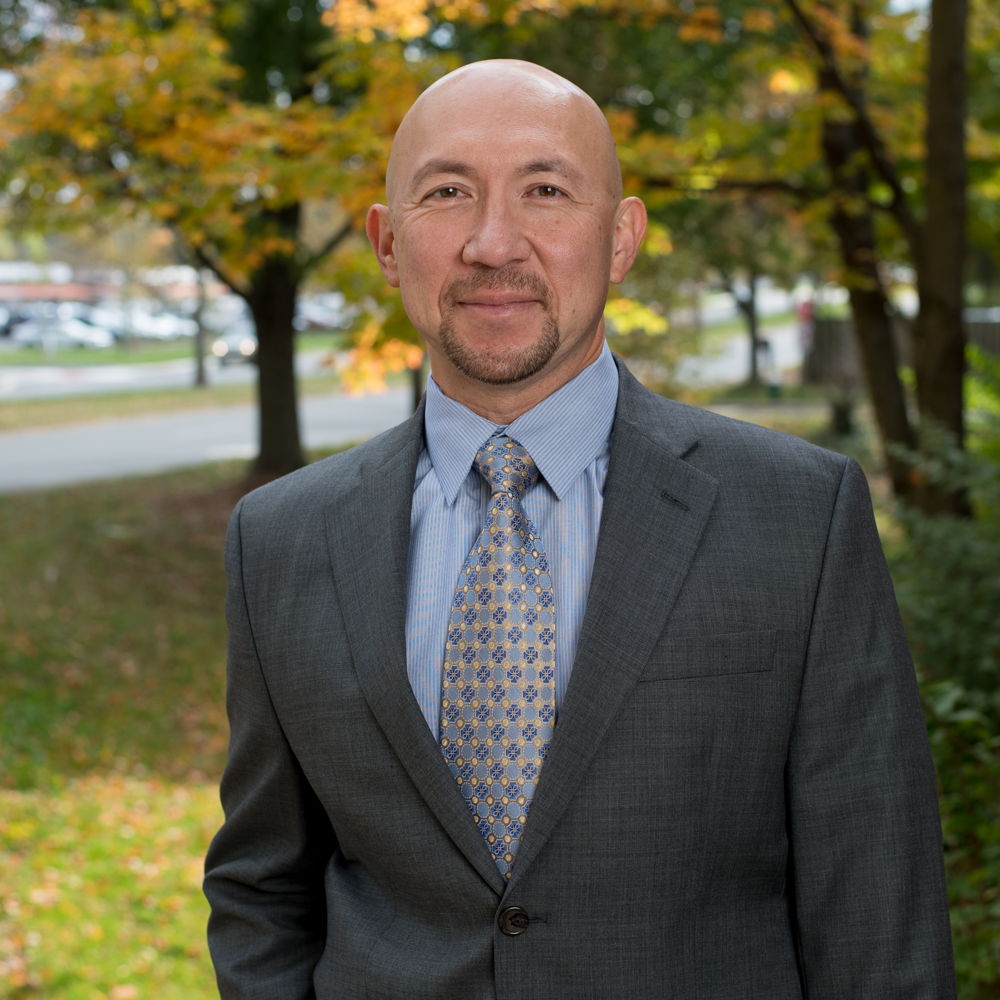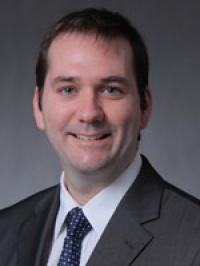
Dr. Ron Noy M.D.
Orthopedist
424 Madison Avenue 9th Floor New York New York, 10017About
Ron Noy, MD, FAAOS, obtained his medical degree from New Jersey Medical School in 1991 and completed his internship in 1992 at Lenox Hill Hospital. Later, in 2000, Dr. Noy completed his residency at Kingsbrook Jewish Medical Center followed by his fellowship training at Methodist Sports Medicine, in Sports Medicine (shoulder concentration) in 2001. Since beginning his medical career, Dr. Noy has become a Fellow of the American Academy of Orthopaedic Surgeons; he credits his success to giving excellent patient care. Today he is practicing orthopaedic surgery at Prestige Orthopedics and Sports Medicine, in Manhattan, New York.
Dr. Ron Noy M.D.'s Videos
Education and Training
New Jersey Medical School
Rutgers 1990
Rutgers New Jersey Medical School 1991
Board Certification
American Board of Orthopedic Surgery - Orthopedic Surgery; American Board of Orthopedic Surgery – Sports Medicine
Orthopaedic SurgeryAmerican Board of Orthopaedic SurgeryABOS- Orthopaedic Sports Medicine
Provider Details

Dr. Ron Noy M.D.'s Expert Contributions
Avoiding Shoulder Surgery in Impingement
Shoulder impingement is one of the most common ailments in athletes and non-athletes alike. It can be from an overuse repetitive injury or from a traumatic strain of the arm. The rotator cuff consists of four tendons that surround and grab the ball of the joint, called the humeral head, and...
Knee injury?
It is not uncommon to not have pain when you tear your ACL, but have swelling, loss of motion, tightness, and instability. Best to see a knee or sports medicine orthopedic specialist for proper history and physical, followed by imaging and other tests if needed. Try to get the swelling down in the meantime using elevation and proper ice/cold therapy techniques. Reducing the swelling will alleviate some of the symptoms, but not the instability. Try to avoid situations in which your knee may give way until properly evaluated as this can cause more damage. READ MORE
Knee pain?
Most likely reasons include a meniscus tear or a loose body (piece of cartilage or bone). Either can get stuck in your knee temporarily and cause the knee to give way. Your knee can swell as part of the response to it. The pain can be from the swelling itself, the piece still being stuck between the two bones or a resulting bone bruise from the impact when your knee gave way. An mri scan would be helpful in ruling these out, and can show other concomitant pathologies such as osteonecrosis, ligament tears and fractures for example. The x-rays should have shown if there is any arthritis which often is associated with meniscus tears and loose bodies. The first step right now is to get the swelling down which will help reduce the pain related to that, and allow the beginning process of regaining motion and strength. Seeing an orthopedic knee specialist for repeat physical examination and further imaging if still necessary should be considered as well, so that treatment can be adjusted properly and get you back to your normal self. Ron Noy, MD, FAAOS [cid:image001.jpg@01D7FA53.BE858550] Important Privacy Notice: This e-mail message is intended only for the use of the individual or entity to whom it is addressed and may contain information that is privileged or confidential. If the reader of this message is not the intended recipient or an employee or agent responsible for delivering the message to the intended recipient, you are hereby notified that any dissemination, distribution, or copying of this communication is strictly prohibited. If you have received this communication in error, please notify me immediately and then delete this e-mail message. READ MORE
Can a bone bruise hide a tear in your knee?
It depends on the quality of the mri scan and location of the bone bruise, but is not common unless the area is directly next to the meniscus tear. However, there are many reasons for your symptoms in addition to potential meniscus tear that need to be evaluated. Assuming the diagnosis is correct, patella dislocations can be associated with a piece of cartilage and/or bone breaking off and becoming what is known as a “loose body.” Loose bodies can mimic meniscus tear symptoms. This includes things like locking, buckling, swelling, inability to bear weight and pain. Additionally, when you get a bone bruise, the cartilage surface over that area can break down and cause symptoms like swelling. Lastly, while recurrent dislocations are more common in younger age groups experiencing their first dislocation, you do tear ligaments (most commonly the Medial Patellofemoral Ligament, or MPFL) when the knee cap dislocates or even subluxates (partial dislocation) and you can redislocate the knee cap (patella). Even without recurrent dislocations, it can lead to maltracking of the kneecap and symptoms as well. Repeat physical examination and possible further imaging such as an mr arthrogram, CT scan, ultrasound, and x-rays should pinpoint the actual current problem. Additionally, a mini-scope or arthroscopy may be ultimately necessary. Lastly, if the bone bruise was in the area of the meniscus as opposed to the patella and/or upper femoral condyle, that sometimes could indicate a meniscus tear even if not seen on the mri scan initially. If the bone bruises were in the typical “kissing lesions” on the femoral condyle and tibial plateau consistent with an ACL tear, that should also be ruled out even if the mri scan did not show an ACL tear. Most importantly is to see an orthopedic knee or sports medicine specialist and get proper re-evaluation. READ MORE
Do all herniated discs need surgery?
No, not all herniated discs need surgical intervention. Most, indeed, do not. It all depends on the symptoms the herniated disc is causing, as well how long the symptoms have been happening. For example, if it is causing a foot drop, it may be more pressing to intervene surgically. However, if it is causing only pain without neurological symptoms such as weakness or numbness, non-surgical treatments are usually tried initially, and more often than not, successful. These treatments may include short period of rest, braces, oral medications like a Medrol dose pack (short course of steroids), and physical therapy. Less invasive treatments such as injections are often tried if these non-invasive treatments fail, before resorting to surgical intervention. Ron Noy, MD, FAAOS READ MORE
Achilles tendon pain and snapping?
Radiological studies may be helpful in determining the cause. X-rays and/or CT scan can look for calcium deposits, os trigonum (an accessory bone in the back of the ankle), and bone spurs, as well as fracture fragments and bone chips. An ultrasound is a dynamic test that can show which tendon is actually snapping and why, as well as show the bursitis. For instance, the peroneal tendons can snap and they are not far from your Achilles’ tendon. An MRI scan can show the tendons best and degenerative areas as well as ligaments, bursae and other soft tissue structures, some which can contribute to snapping. Talk to your orthopedic doctor to help decide which test(s) are necessary. Ron Noy, MD READ MORE
Can flat feet be fixed without surgery?
It depends on the etiology and whether it’s flexible or rigid. A flexible flatfoot can often be corrected with the right orthotic, while strengthening your posterior tibialis tendon properly if it’s weak can also be helpful. In general, non-surgical treatments should be considered first if possible. Ron Noy, MD, FAAOS READ MORE
Can I go to the gym with tennis elbow?
As long as the activities you are doing are not painful, you are probably not doing further damage to the tendon. Ways to help avoid this include using a tennis elbow strap (as long as you do not have concurrent radial nerve entrapment which can worsen using a tennis elbow strap) and avoiding exercises that require extending your wrists and/or firing your wrist extensors like during reverse curls. Try doing some tennis elbow stretches before and after your work out, and ice the area for ten minutes afterwards in case you did irritate it. Lastly, make sure you have the right diagnosis by seeing a qualified professional as there are things that can mimic tennis elbow which would require different exercise modification and/or treatments. Ron Noy, MD, FAAOS READ MORE
Is massage good for tennis elbow?
Massage done correctly can be beneficial to tennis elbow, as part of initial treatment which can also include using a wrist immobilizer for a week or so (this immobilizes the tendons involved at the elbow), special stretches, and proper icing. For better results, try icing the area for a few minutes, then do circular massaging of the area using your thumb or proper device, then ice again for 5-10 minutes afterwards. Ron Noy, MD, FAAOS READ MORE
What is moving in my right knee?
Loose bodies are very common after knee dislocations, and can feel as you described. A loose body is usually a piece of articular cartilage and or bone that gets dislodged during the initial trauma, but can also occur later on if the dislocation leaves the knee unstable and recurrent microtraumas occur. A meniscus tear, which can also occur during such traumatic events, can often feel like a loose body as well. Best to be evaluated by a knee specialist including proper X-rays, MRI scan and CT scan if necessary, and correcting the problem if necessary before it causes further damage. Ron Noy, MD, FAAOS READ MORE
Is physical therapy necessary after ankle surgery?
Physical therapy is usually helpful after surgery, as the therapist can guide you how to recover quicker and fully. The ankle is especially hard to recover on your own because it is hard to prevent swelling since your ankle is at the bottom of your body, and the key to feeling normal after surgery includes no swelling, full motion and full strength. Many times you can get exercises to do at home from the therapist and go weekly to check in and get adjustments to your protocol, but sometimes you may need a few sessions per week for maximum improvement, especially early on. Ron Noy, MD, FAAOS READ MORE
Which is better ankle fusion or ankle replacement?
The benefits of ankle replacement include maintaining motion where a fusion loses all motion which can affect the joints proximally and distally. However, given your young age, this would probably require revisions over your lifetime which get more difficult each time it is done. That being said, a fusion can be a salvation procedure in the future if the ankle replacement doesn’t work or revisions are not possible due to bone loss. The questions that need to be asked first to help determine what is best for you, assuming that surgery is now the only alternative, is, what is the etiology of your ankle arthritis, how active are you (work, sports, recreation), can you modify those activities, etc. Best to have an orthopedic foot and ankle specialist do a thorough history and physical, lab work up, and proper radiological studies to help determine the best course of treatment for you. Ron Noy, MD, FAAOS READ MORE
How long is physical therapy after ankle surgery?
The length of time needed for physical therapy after ankle surgery depends on the kind of surgery you have, how well your body responds to therapy, and how compliant you are with your post-operative protocol. This can be as little as a few weeks to months. Your surgeon should have a general idea based on what surgery is planned and their particular post-operative protocol, as well as the therapists they use. Ron Noy, MD, FAAOS READ MORE
What shoes are good for flat feet?
A quality sneaker with good heel and arch support, such as New Balance and similar running shoe companies, is always a good start. If your foot pronates, talk to the sales person to help you find a model specific for pronators. This will have the medial side of the heel higher than the lateral side, which can help correct a flat pronated foot. It’s like built in orthotics in your shoe. If your foot is rigidly flat, this will not help and you should see a specialist for possible work up and alternative treatments. Ron Noy, MD, FAAOS READ MORE
Do bunion splints really work?
Since splinting does not address the underlying pathology, splinting alone will probably not be successful. Shoe wear modification is usually the first step. If that is not helpful, then it is important to see a foot specialist to determine which of the several underlying pathologies contributes to the deformity, which will then guide you to the correct treatment. Ron Noy, MD, FAAOS READ MORE
Why do my feet hurt after wearing orthotics?
If your feet hurt after wearing orthotics, the most likely reason is that they may not fit properly, and you should have the orthotist or podiatrist that made them check them and adjust them. Minor adjustments are often necessary, sometimes more than once, for proper fit. If they are off-the-shelf orthotics, consider custom made or orthotics or at least try a different pair. Ron Noy, MD, FAAOS READ MORE
How do you know if your Achilles tendon is torn or ruptured?
If you cannot plantar flex your ankle/foot, meaning you cannot point your foot down, it is possible you have torn your Achilles tendon. You can also passively start your ankle/foot in a dorsiflexed or neutral position by laying on your stomach with your knee bent and leg in the air, then squeeze your calf muscle with your hands and see if your ankle/foot does not move towards the ceiling. If it doesn’t, it may also be torn. However, you can have a torn tendon with an intact periosteal sleeve and still be able to point your foot down. If you feel a gap in the tendon by comparing it to the other leg, have difficulty pushing off the foot, or pain with walking, it may also be torn. A good physical examination by a qualified orthopedic or sports medicine physician should be able to tell you with high certainty, but an MRI scan can be used to image the tendon to be certain. Ron Noy, MD, FAAOS READ MORE
What causes fluid in the knee?
The most common cause of fluid build up is inflammation. If it is between the knee cap and the skin, it is most likely in the bursa called bursitis. If it is behind the knee cap, it is in the joint itself, called joint effusion. The most common causes of a joint effusion in your age group include arthritis, chondromalacia (damaged articular surface cartilage), and meniscus cartilage tears. Fluid can be related to other disease processes such as rheumatological disorders, ligament tears, fractures and infections, so it is important to be evaluated appropriately to determine the cause and direct treatment specific to your knee. If you have severe pain, fever, difficulty putting weight, redness, warmth or other evidence of infection, it can be an emergent situation that needs to be evaluated right away. Ron Noy, MD, FAAOS READ MORE
How long does it take for tendonitis in the knee to heal?
The acute inflammatory component, the “itis” in tendonitis, can be short lived and either stop once the activity stops, stop after a short period of time, or persist constantly. The degenerative component is the often underlying issue, and is termed tendinosis. This is the portion of the tendon that can tear and lead to surgery, so it is important to be evaluated by a sports medicine doctor to see if this is an issue for you. The time to “heal” will all depend on the amount of degeneration and which treatment option is chosen that is best for you to follow. However, if there is no improvement after 6 weeks of non-surgical treatment and there is a degenerative area found on ultrasound or MRI scan, you may be a candidate for a minimally invasive treatment that removes the degenerative tissue through a tiny stab incision, after which the recovery from this procedure is usually about 6 weeks. Ron Noy, MD, FAAOS READ MORE
What is the alternative to knee replacement surgery?
Alternatives to knee replacement surgery for symptomatic arthritic knees include physical therapy, oral medications, injectable medications, and alternative types of surgery. Physical therapy and home exercise programs will included low impact strengthening and range of motion exercises and if full motion and strength is achieved, even bone on bone knees can sometimes feel normal. It is important to achieve full hyperextension in order to be able to regain full quadriceps strength. Oral medications that reduce inflammation (if there are no medical contraindications), can help during acute swollen times, as can rest, elevation, gentle compression and ice. Some people do well with over the counter medications including chondroitin sulfate/glucosamine, turmeric, omega-3 and others. Always discuss with your physician before starting any medications. Injectables include corticosteroids (should only be done once or twice as repeated injections can make things worse), hyaluronic acid, PRP and stem-cells (many kinds, not all the same). Alternate surgeries can include arthroscopy for loose bodies, symptomatic meniscus tears and excision of impinging bone spurs, biologic cartilage restoration procedures, tibial and femoral osteotomy realignment procedures, fusions (rare cases), and partial robotic knee replacements. See your orthopedic surgeon to help you determine what are the best options for you now and in the future. Ron Noy, MD, FAAOS READ MORE
Is walking good for osteoporosis?
In general, walking is a good low impact activity that can help keep bones healthier and stronger than inactivity. As we can lose bone density after the age of 30, it is good to get into a good routine earlier than later. Always check with your doctor before starting a new exercise activity to make sure you do not have any contraindications, and stop and let your doctor know if the activity is causing discomfort or pain. If you have severe osteoporosis already, walking too much can result in stress fractures, so follow the guidance of your physician who knows you best. Ron Noy, MD, FAAOS READ MORE
Areas of expertise and specialization
Treatments
- Torn Meniscus
- Arthritis
- Osteoarthritis
- Frozen Shoulder
- Rotator Cuff Syndrome
- Pain
- Tendonitis
- Tennis Elbow
Internships
- Lenox Hill Hospital
Fellowships
- Methodist Sports Medicine, Fellow, Sports Medicine
What do you attribute your success to?
Excellent Patient Care
Hobbies / Sports
- Golfing
Dr. Ron Noy M.D.'s Practice location
New York, New York 10017Get Direction
Dr. Ron Noy M.D.'s reviews
Write ReviewPatient Experience with Dr. Noy
Recommended Articles
- What Is Minimally Invasive Spine Surgery?
Spinal surgery usually requires that the surgeon makes a relatively huge incision on the patient’s back in order to have complete access to the spinal vertebrae. This is the usual procedure in dealing with defects of the spine, and it has been so because of the delicate nature of the...
- What to Expect While Undergoing Spinal Stenosis Surgery?
Spinal stenosis is a condition where two spinal vertebrae separated by an intervertebral disc come closer as the disc wears off due to osteoarthritis, rheumatoid arthritis or trauma. When this happens, the spinal nerve that runs between them becomes compressed causing pain to the individual. The...
- What Is Bursitis: Get the Facts
There are conditions that we experience or live with in our life. Moreover, we tend to assume that most of them are normal or of no much importance. Some of these conditions or feelings in our bodies may later cause bigger problems and it is necessary to understand them and their sources. It is also...
- What to Expect After Knee Replacement Surgery
The major thing you would expect after a knee replacement is proper recovery and the successful outcome of the procedure. Knee replacement surgery is a procedure that is aimed at correcting a damaged knee joint. The recovery period after this operation varies depending on the type of surgery carried...
- How Effective is Knee Replacement Surgery?
How Effective is Knee Replacement Surgery?This surgery is normally recommended for elderly people who suffer from severe pain due to osteoarthritis. It is suggested for people if the pain and stiffness in their joints affects their mobility and daily activities. One has to understand both the...
- What Specialists Treat Osteoporosis?
Osteoporosis is sometimes described as "bone thinning". It’s a disease wherein the bone’s density and quality are severely reduced. As an individual’s bones become more permeable and fragile, the susceptibility to fracture is immensely increased. Bone loss occurs silently and progressively....
Nearby Providers
- Imran Ashraf M.D800 2nd Avenue New York NY 10017
- Dr. Steven Schiebert D.O.545 fifth Avenue New York NY 10017
- Dr. Jason Marc Gallina MD820 Second Avenue New York NY 10017
- Scott Katzman M.D.545 fifth Avenue New York NY 10017
- Dr. Baron S. Lonner M.D.820 2nd Ave New York NY 10017
- Dr. Kenneth R Alleyne MD20 East 46th St New York NY 10017
Nearest Hospitals
NYU HOSPITALS CENTERl
550 FIRST AVENUE NEW YORK NY 10016











